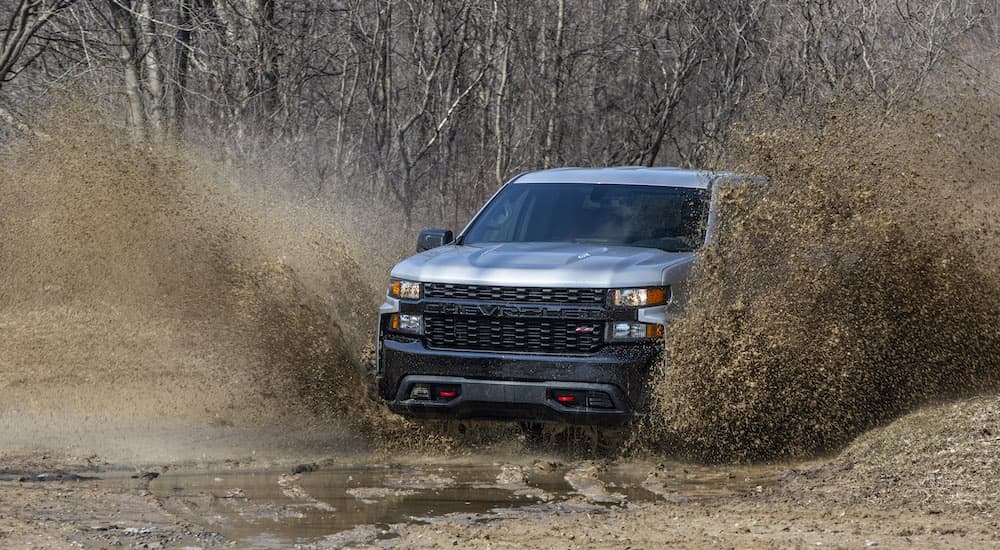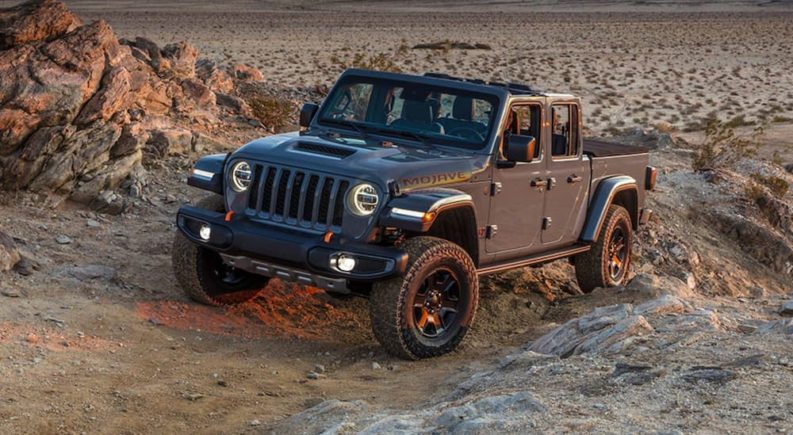Regardless of what kind of vehicle you have, proper maintenance and routine service are the most important things you can do to keep it running perfectly. This is even more crucial if you have a ride that you like to take off-road, since you’re putting your truck or SUV through much more abuse than the average car that’s just used for getting around town. Whether you have an F-150 Raptor that you like to work on yourself, or you have a Wrangler that you prefer to take to a Jeep service center, you need to properly care for your vehicle. Let’s take a look at some key tips to ensure that your off-road vehicle will get you home safely every time you hit the trail.
Tip #1: Perform Maintenance After Every Trip
Before we get into any details, there’s a single rule that guides everything else: You should perform off-road maintenance after every trip. Let me repeat that: After every trip! I don’t care whether you spent a full weekend outdoors or just managed to enjoy a quick trip on a random Saturday. If you took your vehicle off-road, run through this maintenance list. You might not need to do much work, but you always want to check it over and make sure everything still works as it should before the next time you go off-road.
Tip #2: Clean Your Vehicle Thoroughly
After each off-road adventure, you should give your vehicle a thorough cleaning, inside and out. This isn’t just to keep it looking good. Dirt, mud, and debris can build up and damage your vehicle. Make sure you wash the undercarriage, lift the hood to hose out the engine compartment, and spray around the wheel wells to clear out any dirt and muck. This will remove any build-up and help protect your vehicle’s exterior and frame from damage it could cause. It also allows you to inspect your vehicle for potential damage while you wash it.

Tip #3: Take Care of Your Tires
Off-roading puts extra wear on your vehicle, but few parts take quite as much abuse out on the trail as your tires. Visually inspect your tires for any damage, including deep cuts, punctures, or anything else that could compromise them while you’re on or off the road. Just because they still hold air doesn’t mean they aren’t damaged in other ways. Check your lug nuts and tighten to spec them if needed. If you have beadlock-capable wheels and tires, make sure they’re secure. You should also check the pressure in each tire, and then check it again the following day just to be sure they’re in good shape and properly inflated for road use. This is particularly important if you lowered their pressure on the trail.
Tip #4: Check Your Suspension, Axles, and Shocks
Along with your tires, your suspension and related components also take a lot of abuse while you’re off-road, especially if you hit a demanding trail with lots of bumps and obstacles. Check your suspension components to ensure everything looks good, including the control arms, springs, and track bars. Check for signs of wear, visible damage, or anything that looks out of place. Make sure the ball joints and axles look good, and give each wheel a tug to ensure they’re not wobbly or loose. You’ll need to get under your vehicle to do this, so be absolutely sure you have it jacked up securely before crawling underneath.
Tip #5: Check Your Transmission and Differential
While you’re under your vehicle, be sure to examine your transmission and differential for any damage. Even if you have skid plates that protect the underside, there’s still potential for damage or leaks due to the stresses and abuse of the trail. This is also a good time to check your transmission fluid, especially if you were splashing through deep puddles or river crossings to ensure that no water has contaminated it.
Tip #6: Inspect Your Brakes
Going off-road isn’t typically as hard on brakes as a track day, or even necessarily as rough as daily driving, but it still presents some dangers. Hitting the trail doesn’t wear brake pads very much, but it’s easy for your brake lines or other components to be damaged off-road. Pay careful attention to check for leaks or other damage, especially the brake lines. Inspect the brake discs, drums, and other components for dirt, mud, or sand if you’ve been in those conditions.
Tip #7: Check Your Frame for Damage
The components under your vehicle aren’t the only parts of your truck or SUV at risk when you’re out on the trail. Take a moment to inspect your vehicle’s frame and look for any damage that might’ve occurred while you were having fun. In particular, pay close attention to weak points that might be particularly at risk, such as weld lines and any high-stress areas like suspension mounting points. Similarly, if you see any damage to the body of your vehicle, make sure the damage doesn’t extend beyond that to the frame or other components in that area, which you might not notice at first.
![]()
Tip #8: Clean Your Engine and Check Fluids
Yes, I already said to clean out your engine compartment. I’m repeating it just to be sure. While you’re at it, check all of your engine components including belts, hoses, clamps, and other parts to make sure nothing is loose and that everything looks good. Going off-road is hard on your engine and its parts, so you may need to replace components more often than normal, particularly the air filter. Check all of your fluid levels too, including engine oil, antifreeze, transmission fluid, and power steering. Refill anything that needs to be topped off, and replace fluids on a regular basis. If your vehicle owner’s manual specifies a more frequent maintenance schedule for “severe service,” follow it instead of the normal service schedule. Your vehicle may have been made for off-roading, but this still qualifies as “severe service.”
Tip #9: Check Your Winch
If you used your winch while out on the trail, you were probably in a situation where you couldn’t take your time to re-spool it neatly in the moment. After getting back home, it’s a good idea to pull the line back out and re-spool it properly so you know it will be ready the next time you hit the trail. This is a good time to make sure your line isn’t damaged and your winch is functioning properly, even if you didn’t use it.
Tip #10: Check and Restock Other Gear and Supplies
Finally, check any other gear and supplies that you take on the trail (including the emergency kit that I’m sure you have, right?) and restock anything you used. Don’t assume that you’ll remember using or not using things. You’re probably focused on other matters while enjoying some off-roading. Inventory all of your supplies and restock your snacks, water bottles, medication, and anything else you bring with you. Double-check your tool kit, blankets, clothing, and other gear you always bring to ensure everything looks good and nothing needs to be replaced.
All of this might seem like a lot to do after every trip, but it’s worth it to make sure you’ll be as safe as possible on the trail in a vehicle that’s prepared for anything you throw at it. Getting in the habit of doing these a day or two after an off-road adventure will ensure you’re ready for next time, and you won’t have to scramble to get stuff done right before your next trip. You rely on your vehicle for going off-road, and it relies on you for proper care and maintenance. Don’t let it down, and it won’t let you down.

